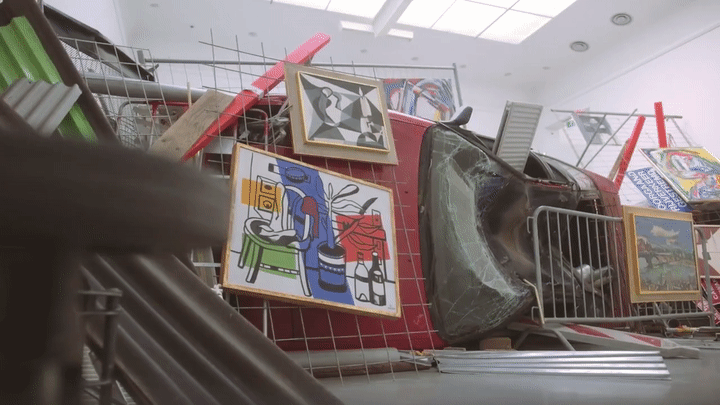



Paris, maio de 1968
São Paulo, ocupação de escolas por estudantes secundaristas contra a reforma do ensino médio, 2016.

What was this barricade made of? Of the ruins of three six-story houses, expressly demolished, some said. The wonder of all furies, said others. (...)
It was the improvisation of boiling. Look, this gate! This grid! This coverage! This chimney piece! This cracked pot! Bring it all, lay it all here!




Ahmet Öğüt, Bakunin's Barricade , 2015.
In 1849, when Prussian troops tried to defeat the socialist insurgency in Dresden, revolutionary anarchist Mikhail Bakunin suggested placing paintings from the National Museum's collection in front of the barricades, speculating that soldiers would not dare destroy the works and therefore pass through the barricade. In 2015 Ahmet Öğüt created a barricade using works from the Van Abbe collection. A document stipulates that the barricade can be requested and deployed by activists during future social upheavals.


Ahmet Öğüt, Bakunin's Barricade , 2015.







Tools for Action, The Mirror Barricade // Die Spiegel Barrikade, 2016.
A obra idealizada pelo grupo artístico/ativista Tools for Action e construída coletivamente por cidadãos da cidade alemã de Dortmund que se manifestaram contra o "Dia do Futuro Alemão", dia em que grupo de neonazistas se reuniram na cidade. A barricada protegeu os contra-manifestantes, funcionando como escudo contra a violência neonazista e a repressão policial.

@pagodenalata

Raphael Escobar, Direito à Loucura, 2020
Gustavo Speridião e Leandro Barboza, Faixa Protesta, 2019










2.webp)





















